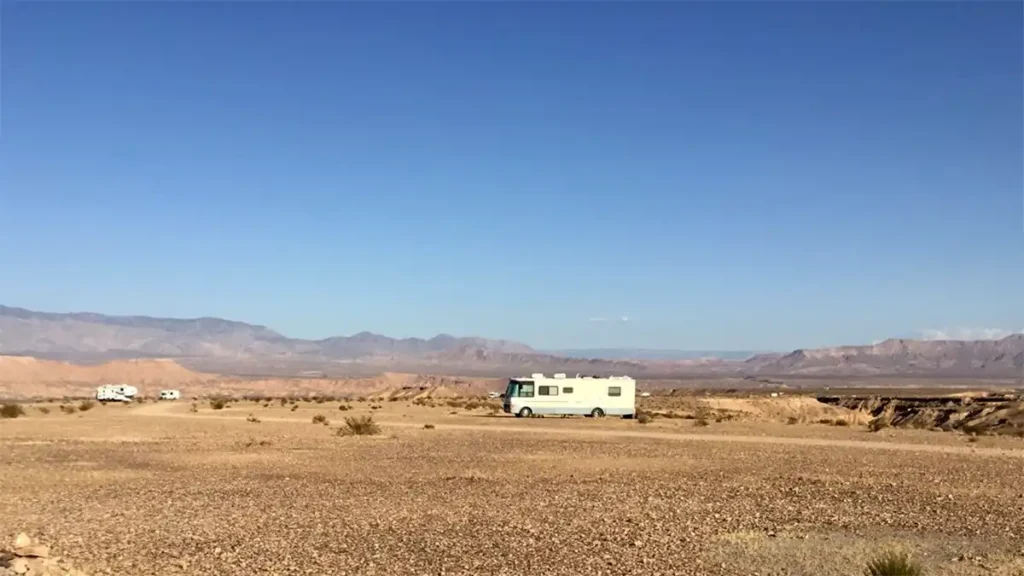Yes, there are plenty of boondocking areas with well-graded roads, wide turns, and solid ground for heavy rigs pulling a vehicle in tow. There is no tried-and-true formula for finding these areas, though most boondocking sites closer to paved roads tend to be better suited for longer, heavier rigs. Otherwise, the best way to find these sites is to read online reviews.

Is Boondocking Feasible for a Class A RV with Toad?
A reader sent us the following question…
We have a 36 ft class a with a toad. Is most boondocking too rough for us to get to? How do you find out which ones are doable?
F. Wilson
Longer, heavier RVs with low ground clearance tend to have trouble driving over rocky, bumpy roads with tight turns, especially when pulling a toad and trying to squeeze between a pair of trees.
But, there are some tools and strategies that boondockers use to help them identify the easier to reach sites…
Read Online Reviews
Popular camping websites have accumulated thousands of boondocking locations with tens of thousands of reviews. The websites we like the most are…
- Campendium – While not 100% free, it does offer free access to its map of campsites and reviews. The upgraded subscription gives you access to its BLM and USFS overlays.
- FreeCampsites.net – still has a high volume of mapped sites and reviews, though it mixes in overnights with an awful lot of Walmarts.
- Boondocker’s Bible – That’s us, we are putting together our own map of curated sites with reviews.
Watch Video Reviews
Many boondockers have produced videos specifically reviewing the campsites they are in. They will show you the road conditions, tell you about cellphone signal strength, and even show you the best sites for larger rigs.
- Search YouTube for the name of the road, “BLM Road 717” or, “Sidewinder Road BLM” or “Forest Road 742”
Use Google Maps Satellite
Google Map’s satellite view is a great tool for scouting out campsites. Because it’s far more detailed, and more frequently updated than the satellite views offered by competing map services, you can get a better idea of what to expect before arriving.
Scout the Area First
Use Google Map’s satellite view to find potential boondocking sites with a parking area close to the highway. That parking area will let you unhitch your toad or trailer and scout the area first.
In particular, you will want to scout for two things…
- If any large sites are open, and
- If there is a place large enough to turn around.
Start Out by Camping at an LTVA
Long Term Visitor Areas (LTVA) are operated by the Bureau of Land Management and are located throughout the California desert, with one location in Arizona. There are about eight to nine of these areas in all.
They are large areas where campers can set up camp anywhere they want. Roads and sites in these areas are all well-graded, well-packed, with plenty of places to turn around. Class A rigs frequent LTVAs.
- This will allow you to spend some time “learning” how to camp off-grid in your RV without being stuck all alone in the middle of nowhere.
- You can then drive your toad or truck and scout out the greater desert region to see what other boondocking sites look like.
Most LTVAs cost money to camp, though some are totally free, and others are free at certain times of the year. BUT, they are very cheap. You can get a 7-month pass for $180.00, which works out to about 80 cents per day. And the pass lets you move to any LTVA as often as you want.
Read more at, “Boondocking at Long Term Visitor Areas“.

